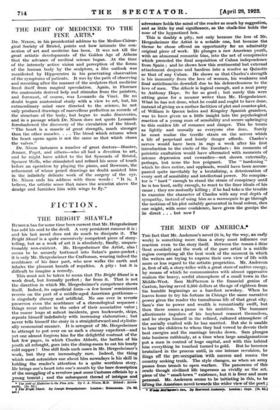THE DEBT OF MEDICINE TO THE FINE ARTS.*
Da. NIXON, in his presidential address to the Medico-Chirur- gical Society of Bristol, points out how intimate the con- nexion of art and medicine has been. It was not till the great artistic developments of the Golden Age of Athens that the advance of medical science began. At the time of the intensely active vision and perception of the forms of the human body by the sculptors, a like outlook was manifested by Hippocrates in his penetrating observation of the symptoms of patients. It was by the path of observing and recording after the manner of the sculptors that medicine freed itself from magical speculation. Again, in Florence the anatomists derived help and stimulus from the painters, and foremost, of course, was Leonardo da Vinci. He no doubt began anatomical study with a view to art, but, his extraordinary mind once directed to the science, he not only produced drawings of marvellous perfection as records of the structure of the body, but began to make discoveries, and in a passage which Dr. Nixon does not quote Leonardo foreshadowed the discovery of the circulation of the blood. " The heart is a muscle of great strength, much stronger than the other muscles. . . . The blood which returns when the heart opens again is not the same as that which closes the valves."
Dr. Nixon instances a number of great doctors—Hunter, Jenner, Paget, and others—who all had a devotion to art, and he might have added to the list Symonds of Bristol, Spencer Wells, who stimulated and refined his sense of touch before an operation by playing the piano, and Bowman, the refinement of whose pencil drawings no doubt assisted him in the infinitely delicate work of the surgery of the eye. Dr. Nixon ends his address with these words : " It is, I believe, the artistic sense that raises the scientist above the drudge and furnishes him with wings to fly."


















































 Previous page
Previous page